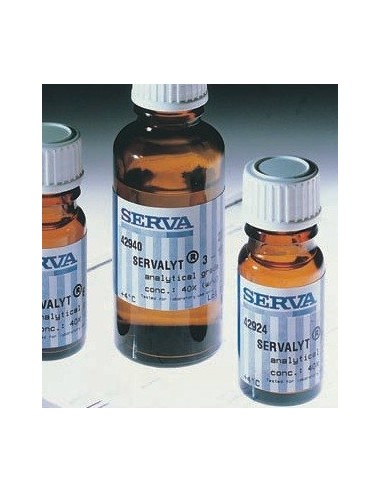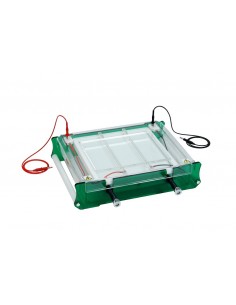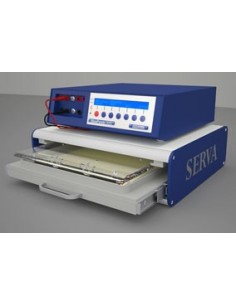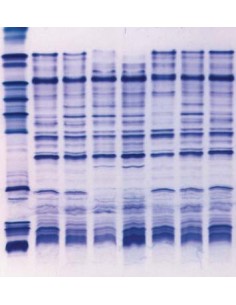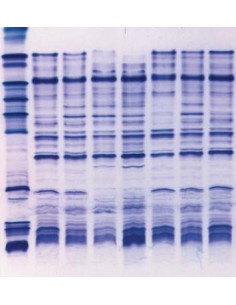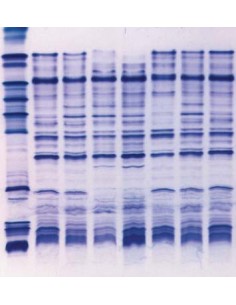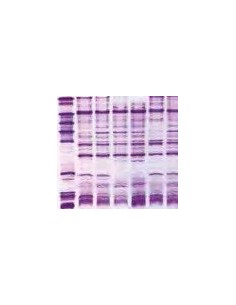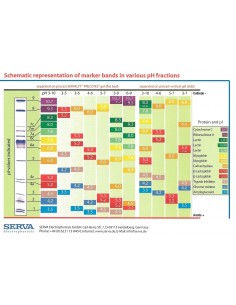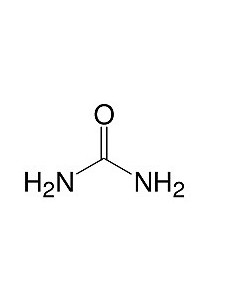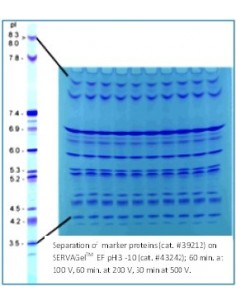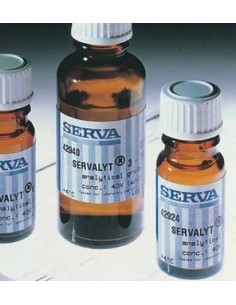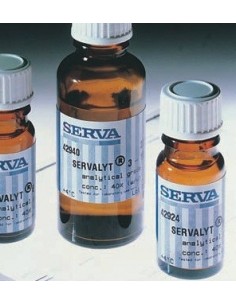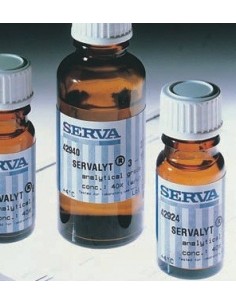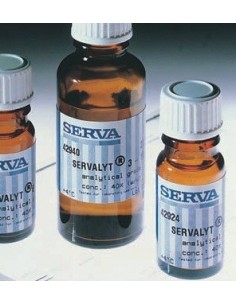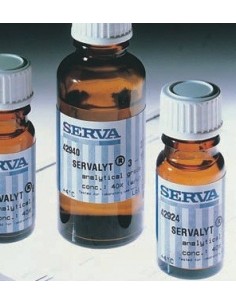Ampholytes pH 3-6, Seravlyt 3-6
Carrier ampholytes 3-6
SERVALYT™ 3-6 carrier ampholytes are useful in identifying acidic isotypes in purified protein samples such as monoclonal antibodies or other biosimilar protein products.
Supplied as 40 % aqueous concentrate and sterile filtered (0.2 μm). If stored at 4 °C and unopened shelf is up to 3 years. The common working concentration is in the range of 3 % to 5 %. Excellent for isoelectric focusing (IEF), capillary isoelectric focusing (cIEF) and free flow electrophoresis.
Benefits:
- Available Two Sizes: 10 ml & 25ml
- High Resolution
- Widest Range Available
- Fast Staining and Clear Background
- Ready to Use or Blending
- 3 year shelf life
Instructions for Servalyt carrier ampholytes
Comparison of different brands of carrier ampholytes
Using an ampholyte pH 3-6 in isoelectric focusing (IEF) offers several applications and benefits, including:
Versatile separation of proteins: The pH range of 3-6 covers a broad spectrum of isoelectric points (pI), allowing for the separation of proteins with diverse pI values. It provides a flexible and adaptable approach for the separation and analysis of proteins across a wide range of acidic and slightly acidic pI values.
Enhanced resolution and selectivity: The use of an ampholyte pH 3-6 enables high-resolution separation of proteins with varying acidic characteristics. The pH gradient established by the ampholytes allows for precise migration and focusing of proteins at their respective pI positions. This leads to sharp and well-resolved bands, facilitating accurate identification and characterization of proteins.
Improved separation of acidic isoforms: Many proteins have multiple isoforms with slight differences in pI values due to post-translational modifications or alternative splicing. The use of an ampholyte pH 3-6 can aid in the separation and identification of these acidic isoforms, providing a tool for studying protein heterogeneity.
Minimization of interference: By using an ampholyte pH 3-6, the focusing range is primarily focused on the acidic region, minimizing potential interference from proteins with higher pI values. This is particularly advantageous when dealing with complex samples containing a mixture of proteins with varying pI values, allowing for selective separation and analysis of the acidic fraction.
Compatibility with various sample types: IEF using an ampholyte pH 3-6 is compatible with various sample types, including biological fluids, cell lysates, or purified protein preparations. This versatility allows for the analysis of proteins from different sources and simplifies the adaptation of IEF for different research applications.
Integration with downstream techniques: IEF with an ampholyte pH 3-6 can be seamlessly integrated with other techniques for further protein analysis. For example, after separation using IEF, the resolved proteins can be subjected to additional techniques such as gel electrophoresis, Western blotting, or mass spectrometry, enabling comprehensive protein characterization and identification.
Research applications: Using an ampholyte pH 3-6 in IEF finds relevance in various research areas, including proteomics, biomarker discovery, protein expression profiling, and studying protein variants. It provides a powerful tool for separating and analyzing acidic proteins and their isoforms in complex biological samples.
In summary, using an ampholyte pH 3-6 in IEF offers versatile separation, enhanced resolution, improved separation of acidic isoforms, minimization of interference, compatibility with various sample types, integration with downstream techniques, and finds application in diverse research areas focused on acidic protein analysis.
No reviews

